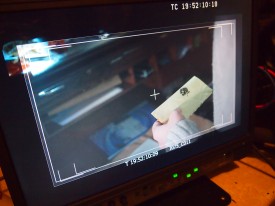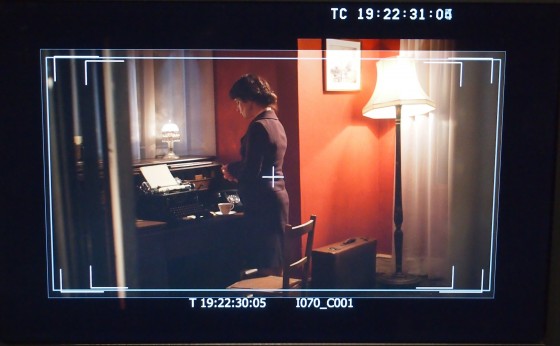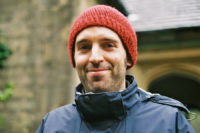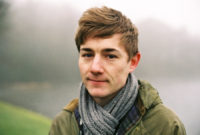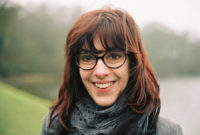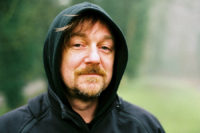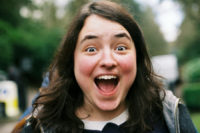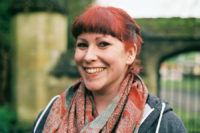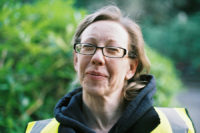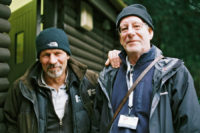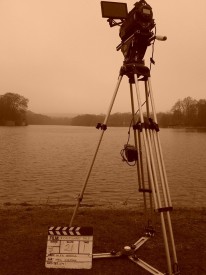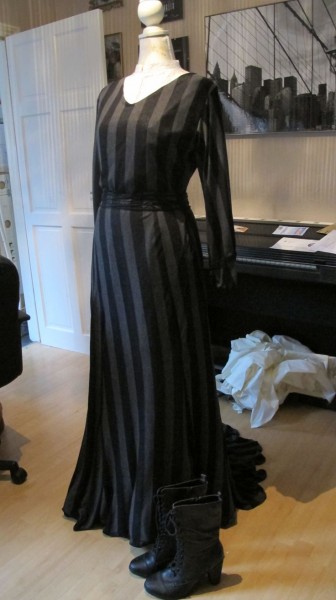
Amelia’s Letter premiered last week at the Cincinnati Film Festival. It’s the first official selection in what we hope will be a long festival run for this moving little ghost story written by Steve Deery and produced by Sophia Ramcharan. Here’s the synopsis:
Amelia receives a letter from her publisher. Over one hundred years later its legacy still haunts writers who visit her Lodge. Gordon discovers the letter and thinks there is a story to be told. It would be better for him if he didn’t try and tell it.
I want to say a bit about my directing process on the film, but beware – this post contains spoilers!
In a preproduction blog entry I talked about writing backstories for the characters, and touched on the films I’d been watching as research. Today I’ll pick up where I left off and carry on through to production.
The backstories, by the way, were really useful to me throughout the process. They provided a filter through which I could view the script, focusing in on what the characters wanted and where they were coming from. And they made it easy to answer many of the questions the actors had about their characters.
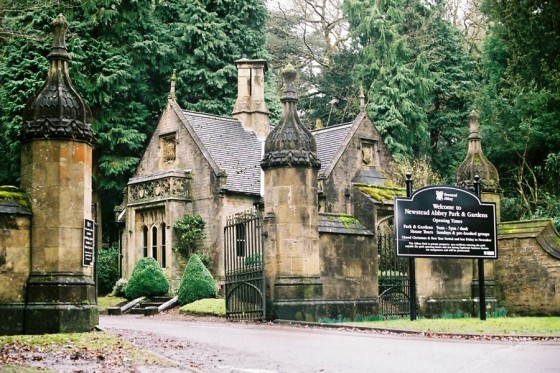
I decided early on to give the film overtones of gothic horror. This can be seen most clearly in the location and costume design. I watched several horror films, gothic and otherwise, as well as ghost stories, during preproduction. The Awakening (2011, dir. Nick Murphy) and The Woman in Black (2012, dir. James Watkins) proved to me the importance of building a strong emotional spine before bringing in the scares, and the latter film along with The Innocents (1961, dir. Jack Clayton) showed how effective a slow, subtle reveal of a ghost in a corner of the frame can be.
However, as the shoot got closer, I realised I had been too fixated on the genre, and had neglected the very emotional spine I’d admired in the above films. At its core, Amelia’s Letter is about a woman committing suicide. I therefore set out to watch some films that dealt with this topic. First up was Seven Pounds (2008, dir. Gabriele Muccino) – for a Hollywood film starring Will Smith, it’s quite dark and thought-provoking – followed by Wristcutters: A Love Story (2006, dir. Goran Dukic) – an inventive and darkly humourous American indie set in a suicides’ afterlife which is just like the real world, only everything’s a bit more rubbish – and finally Veronika Decides to Die (2009, dir. Emily Young) – in which Sarah Michelle Gellar gives a surprisingly good portrayal of a failed suicide learning to love life again.
I can’t point to any specific tips I gleaned from those films, but they certainly made me think more about the issue. Indeed, during Veronika Decides to Die, I had a breakthrough regarding Amelia. I recalled a Richard Herring podcast I’d listened to in which Stephen Fry, Herring’s interviewee, had talked very openly about his bipolar disorder and a recent suicide attempt he had made. I realised that Amelia should be bipolar. Sufferers are often highly creative people, like Amelia, and sadly have a much higher rate of suicide. Actress Georgia Winters embraced the idea, and although it’s not at all explicit from watching the film that Amelia is bipolar, the highs and lows she goes through while reading the letter are a result of this behind-the-scenes decision.

Another thing that was a big influence on my interpretation of the script was a tome which a relative bought me one Christmas during my early teens. The Giant Book of Mysteries (edited by Colin, Rowan and Damon Wilson) features a memorable chapter in which several ghost-hunters theorise that spooks are actually something akin to tape recordings. When a tragic event happens, the theory goes, the emotions of the people involved – emitted as electromagnetic waves from the brain – can be “recorded” by the electrical field of any water nearby, in the same way that sounds can be recorded on the iron oxide of a cassette tape.
I seized this idea as a way of explaining, to the actors if not to the audience, how the supernatural events in Amelia’s Letter function. Once the various authors in the film glimpse Amelia’s ghost and are drawn out of the cottage, it would have been easy to say that these authors are in a trance, but this seemed too easy. Instead I decided that the emotions which Amelia felt when she jumped into the lake were recorded by the water and radiate out from it. The closer they get to the lake, the more their own emotions are taken over by hers until eventually they’re feeling exactly what she did, with the inevitable consequence that they kill themselves too.
Carrying this theory throughout the film, it meant that the glimpses which the authors see of Amelia from the cottage window are simply “recordings” of moments in her life – perhaps a surge of creativity, or depression. By coincidence, the art department had painted fake mould into the corners of the study, which tied in beautifully with the water recording theory and helped explain the supernatural events that occur at the cottage.

Although much of the above will not be directly apparent to the viewer, I hope that it gave extra depth and veracity to the performances and so makes the film more effective overall.
Amelia’s Letter is a Stella Vision production in association with Pondweed Productions. Find out more at facebook.com/ameliasletter







